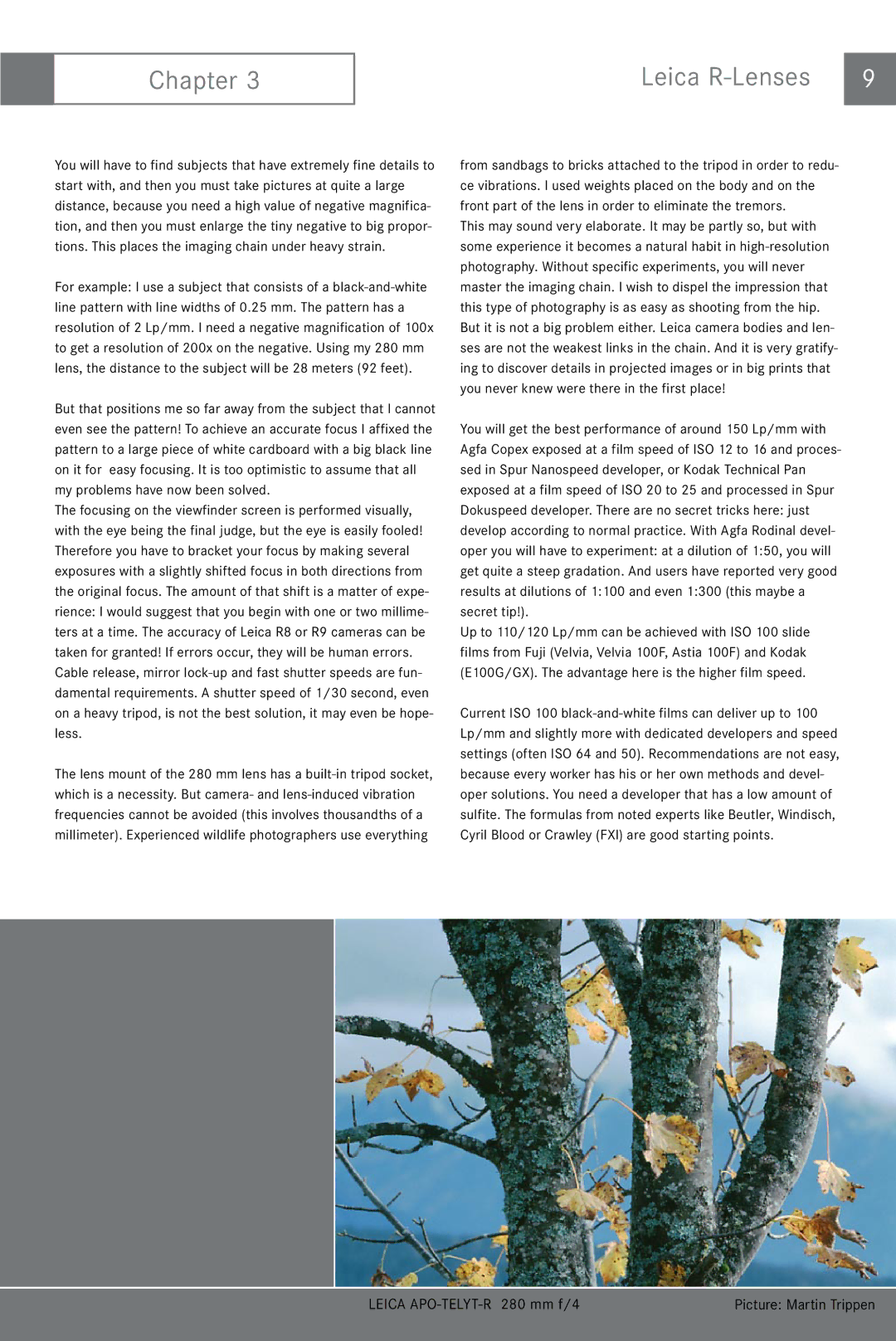
Chapter 3
Leica | 9 |
|
|
You will have to find subjects that have extremely fine details to start with, and then you must take pictures at quite a large distance, because you need a high value of negative magnifica- tion, and then you ![]() must enlarge the
must enlarge the![]() tiny negative to big propor- tions.
tiny negative to big propor- tions.![]() This places the imaging chain under heavy strain.
This places the imaging chain under heavy strain.
For example: I use a subject that consists of a ![]() resolution of 2 Lp/mm. I need a negative magnification of 100x to get a resolution of 200x on the negative. Using my 280 mm lens, the distance to the subject will be 28 meters (92 feet).
resolution of 2 Lp/mm. I need a negative magnification of 100x to get a resolution of 200x on the negative. Using my 280 mm lens, the distance to the subject will be 28 meters (92 feet).
But that positions me so far away from the subject that I cannot even see the pattern! To achieve an accurate focus I affixed the pattern to a large piece of white cardboard with a big black line on it for easy focusing. It is too optimistic to assume that all my problems have now been solved.
The focusing on the viewfinder screen is performed visually, with the eye being the final judge, but the eye is easily fooled! Therefore you have to bracket your focus by making several exposures with a slightly shifted focus in both directions from the original focus. The amount of that shift is a matter of expe- rience: I would suggest that you begin with one or two millime- ters at a time. The accuracy of Leica R8 or R9 cameras can be taken for granted! If errors occur, they will be human errors. Cable release, mirror
The lens mount of the 280 mm lens has a
from sandbags to bricks attached to the tripod in order to redu- ce vibrations. I used weights placed on the body and on the front part of the lens in order to eliminate the tremors.
This may sound very elaborate. It may be partly so, but with some experience it becomes a natural habit in
You will get the best performance of around 150 Lp/mm with Agfa Copex exposed at a film speed of ISO 12 to 16 and proces- sed in Spur Nanospeed developer, or Kodak Technical Pan exposed at a film speed of ISO 20 to 25 and processed in Spur Dokuspeed developer. There are no secret tricks here: just develop according to normal practice. With Agfa Rodinal devel- oper you will have to experiment: at a dilution of 1:50, you will get quite a steep gradation. And users have reported very good results at dilutions of 1:100 and even 1:300 (this maybe a secret tip!).
Up to 110/120 Lp/mm can be achieved with ISO 100 slide films from Fuji (Velvia, Velvia 100F, Astia 100F) and Kodak (E100G/GX). The advantage here is the higher film speed.
Current ISO 100
|
|
|
| LEICA | Picture: Martin Trippen |
|
|
|
